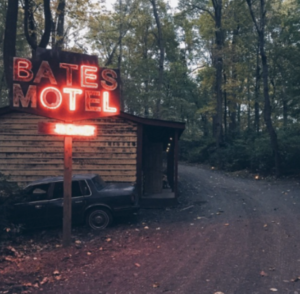If you weren’t raised on the moon, chances are you’ve seen hidden camera shows, such as Punk’d, Spy TV and, of course, Candid Camera. These semi-staged shows entertained millions by pranking or surprising an unknowing participant- catching the whole affair on camera. In several markets, especially the entertainment industry, ‘candid’ videos have emerged as a successful and relatively simple way to promote a product in the increasingly saturated world of viral video marketing.
Like most viral video marketing, the idea of these hidden-camera shots is to create a quick and entertaining clip that captures the energy and feel of your brand without working too hard to sell a particular product. It is not an advertisement in the strictest sense, but should still hold some relevance to your product, in order to create a strong link between the viewer and your brand- allowing the audience to ‘experience’ your brand in some way. For this reason, the most logical use for the format is often for entertainment brand-promotion.
The above clip offers a great example of how such a campaign can draw links to a brand without hitting the audience over the head with a sale. In order to promote the recent remake of Carrie, this marketing team hired actors and set designers to create a scene where a telekinetic girl (similar to the lead character in the film) becomes upset and uses her powers in a coffee shop. After a behind-the-scenes look at the mechanics of the prank, the video shows how oblivious customers react to the scene while waiting in line for their cup of joe.
While it is clear to the audience that the prank is themed around Carrie, the clip is focused more around content marketing than promotion of the film. People enjoy watching pranks on YouTube. This one is complicated and well done, and includes a behind-the-scenes feature similar to popular hidden camera shows. The only real connection to the film is the loose thematic similarities and the title cards at either end of the clip.
Similarly, AMC’s hidden-camera promotion for their hit series The Walking Dead takes the show’s excitement to the streets of New York City. By creating a storm-grate set on an NYC sidewalk and filling it with zombified extras. The premise is simple enough: Whenever a passerby approaches the storm grate, the ‘zombies’ begin to growl and raise their arms through the grate.
Videos like this work (over 4 million views, people) for the same reason that flashmob videos spread like wild fire. People like the idea that something that fun and spontaneous could happen to them. While the likelihood that you will be present for a prank or flashmob is rather low, watching Carrie or The Walking Dead surprise real people makes the excitement feel real and within one’s reach. Via this short, fun video AMC shows their audience what it would be like bring a bit of the Zompocalpyse to the real world.
It’s true that this format is probably most easily adapted for the entertainment industry, but that doesn’t mean other industries can’t attract attention by getting a little creative. Canadian airline WestJet used the format to surprise passengers on a Christmas Eve flight. As a ‘special’ Christmas promotion, passengers were asked to scan their boarding passes at a video kiosk, where a digital Santa would ask them what they wanted for Christmas. As far as the passengers knew, this the end of the promotion- just a fun, simple holiday gesture.
Unbeknownst to the passengers, their interactions were recorded, and a crew at their destination rushed to purchase and wrap the gifts that passengers- of all ages- had recorded. When they went to pick up their luggage, they were given an extra, wrapped package. The overall message is that WestJet really cares about their customers, but that’s not why the audience watches. They watch to see how the video will turn out, and what steps went into the process.
This sort of marketing doesn’t have to be limited to large corporations with bigger budgets and resources. As seen above, the Chldren’s Museum of Indianapolis has had success using low-budget videos to market events and exhibits on a local scale. In this clip. volunteers promote a new frog exhibit by hopping around downtown dressed as frogs. Along the way, they stop to explain the new exhibit to curious parties. The resulting video builds a similar curiosity online. Who are these people? Why are they dressed that way? This curiosity works perfectly with the Children’s Museum’s overall mission and audience, and represents their brand in a fresh and interesting light.
Your Turn:
What elements of your brand would work well in a hidden camera video? Could your restaurant surprise diners by picking up the tab? What would happen if your coffee shop taped tickets to the big game or show under an unsuspecting customer’s cup? Think of a simple deed or gesture your company could pull off, and make sure you catch it on film. Let that clip loose on YouTube, and you’ll likely be pleasantly surprised at the results.

